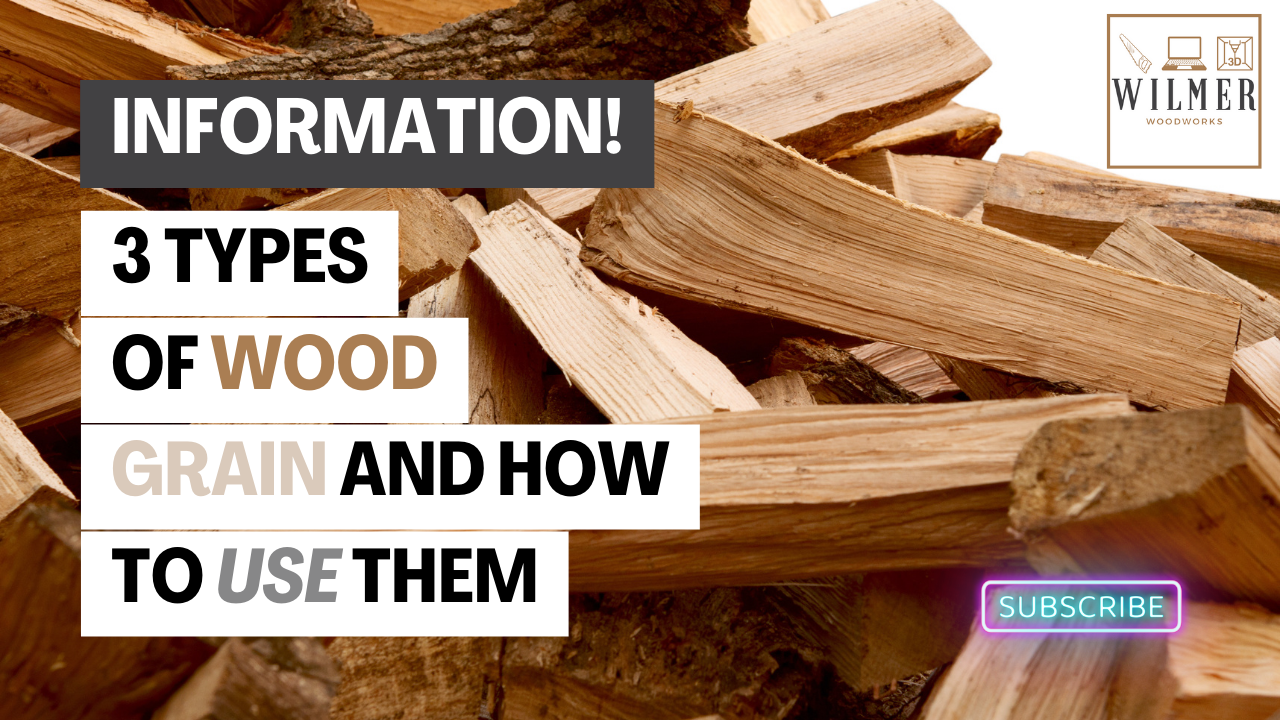The Three Types of Wood Grain and How to Use Them
If you are a woodworker, you probably know that wood has different types of grain depending on how it is cut. The grain is the direction and pattern of the wood fibers, and it affects the appearance, strength, and durability of the wood. The three main types of wood grain are face grain, edge grain, and end grain. In this post, I will explain what each type of grain means, what are their pros and cons, and how to use them for your woodworking projects.
Face Grain
Face grain is the part of the wood that has the widest and most visible grain pattern. It is the surface that you see on the front of cabinet doors, tabletops, and floorboards. It is also the surface that woodworkers measure the “width” of a board. Face grain is the most decorative and attractive part of the wood, as it shows the natural color and texture of the wood species. Face grain is also the softest and weakest part of the wood, as it is more prone to scratches, dents, and warping. Face grain is not recommended for cutting boards, as it will dull your knives and show knife marks easily. Face grain is best used for projects that require a smooth and beautiful finish, such as furniture, paneling, and art1.
Edge Grain
Edge grain is the part of the wood that has the narrowest and most uniform grain pattern. It is the surface that you see on the side of a board, where the growth rings of the tree are perpendicular to the surface. It is also the surface that woodworkers measure the “thickness” of a board. Edge grain is more durable and stable than face grain, as it is less likely to warp, crack, or split. Edge grain is also more resistant to scratches and dents than face grain, but not as much as end grain. Edge grain is a good choice for cutting boards, as it will not dull your knives and will not show knife marks as much as face grain. Edge grain is also commonly used for projects that require strength and stability, such as countertops, shelves, and flooring1.
End Grain
End grain is the part of the wood that has the most distinctive and varied grain pattern. It is the surface that you see on the end of a board, where the growth rings of the tree are parallel to the surface. It is also the surface that woodworkers measure the “length” of a board. End grain is the hardest and strongest part of the wood, as it is more resistant to shocks, impacts, and wear and tear than face grain or edge grain. End grain is also the most absorbent part of the wood, as it has open pores that can soak up moisture and oils. End grain is the best choice for cutting boards, like the one I made in this video: https://youtu.be/BcvOQ0ZokY8, as it will not dull your knives and will self-heal from knife marks. End grain is also used for projects that require durability and resilience, such as butcher blocks, factory floors, and mallets1.
How to Use the Different Types of Wood Grain
Knowing the different types of wood grain can help you choose the right wood for your woodworking projects. Here are some tips on how to use the different types of wood grain:
- Face grain: Use face grain for projects that require a smooth and attractive finish, such as furniture, paneling, and art. Avoid using face grain for cutting boards, as it will dull your knives and show knife marks easily. Sand face grain with the direction of the grain, and apply a clear finish to protect and enhance the wood.
- Edge grain: Use edge grain for projects that require strength and stability, such as countertops, shelves, and flooring. You can also use edge grain for cutting boards, as it will not dull your knives and will not show knife marks as much as face grain. Sand edge grain with the direction of the grain, and apply a clear or colored finish to protect and enhance the wood.
- End grain: Use end grain for projects that require durability and resilience, such as butcher blocks, factory floors, and mallets. End grain is also the best choice for cutting boards, as it will not dull your knives and will self-heal from knife marks. Sand end grain with a circular motion, and apply a mineral oil or a wax to protect and enhance the wood.
Conclusion
Wood grain is an important factor to consider when choosing and working with wood. The three main types of wood grain are face grain, edge grain, and end grain, and they have different characteristics, advantages, and disadvantages. By understanding the different types of wood grain, you can select the right wood for your woodworking projects and achieve the best results. I hope you found this post helpful and informative. If you have any questions or comments, please feel free to leave them below. Happy woodworking!







